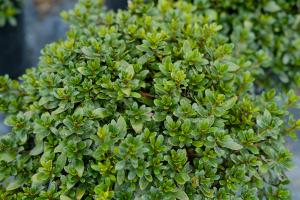Introduction
When it comes to growing tomatoes, there are many things to consider to ensure they grow healthy and strong. Soil pH, nutrients, watering, and sunlight are all important factors. One nutrient that is often overlooked, however, is magnesium sulfate, commonly known as Epsom salt. In this article, we’ll discuss how much Epsom salt to put in tomato plant holes for optimal growth.
The Benefits of Epsom Salt for Tomatoes
Epsom salt is a source of magnesium and sulfur, two essential nutrients for plant growth. Magnesium plays a crucial role in photosynthesis, the process by which plants convert sunlight into energy. It also helps with the uptake of other important nutrients, like nitrogen and phosphorus. Sulfur is necessary for the production of proteins and chlorophyll, which gives plants their green color. Adding Epsom salt to your tomato plant holes can help improve the overall health and yield of your plants.
How Much Epsom Salt to Use
The amount of Epsom salt to use in tomato plant holes depends on several factors, including the size of the hole and the soil composition. As a general rule of thumb, you can use one to two tablespoons of Epsom salt per hole. If you’re planting multiple tomato plants in the same area, you can mix 1/2 cup of Epsom salt into the soil before planting.
When to Apply Epsom Salt
You should add Epsom salt to your tomato plant holes when you’re first planting your tomatoes. Dig the hole and add the Epsom salt to the bottom of it, then cover it with a thin layer of soil before adding your tomato plant. You can also apply Epsom salt as a side dressing later in the season if you notice your tomato plants are lacking in magnesium or sulfur. To do this, sprinkle 1/4 cup of Epsom salt around the base of each plant and water it in.
Signs of Epsom Salt Deficiency in Tomatoes
If your tomato plants are lacking in magnesium or sulfur, it can lead to stunted growth, yellowing leaves, and a decrease in fruit production. This is especially true if your soil is sandy or acidic, which can cause nutrients to leach out of the soil more quickly. Adding Epsom salt can help correct these deficiencies and promote healthy tomato plants.
Conclusion
Adding Epsom salt to your tomato plant holes is a great way to provide your plants with the essential nutrients they need to grow healthy and strong. Using one to two tablespoons per hole, or 1/2 cup mixed into the soil, can improve the overall yield of your tomato plants. Keep an eye out for signs of magnesium or sulfur deficiency, and consider adding Epsom salt as a side dressing if necessary. With the right nutrients, your tomato plants will thrive and produce a bountiful harvest.

 how many times do yo...
how many times do yo... how many planted tre...
how many planted tre... how many pine trees ...
how many pine trees ... how many pecan trees...
how many pecan trees... how many plants comp...
how many plants comp... how many plants can ...
how many plants can ... how many plants and ...
how many plants and ... how many pepper plan...
how many pepper plan...
































